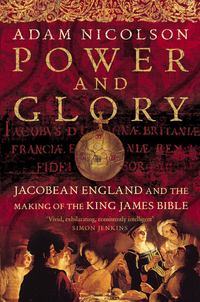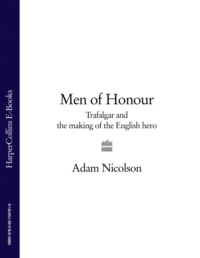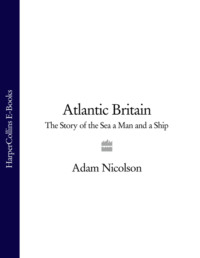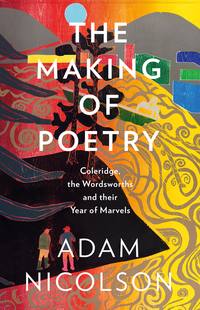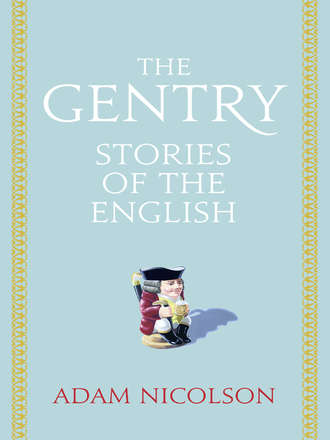
Полная версия
The Gentry: Stories of the English
But in October 1536, as the first of the monasteries was being dissolved, his life deepened into something much more dangerous. Large-scale rebellions, which broke out first in Lincolnshire and then in Yorkshire and the north-west, turned those months into the most threatening of Henry’s reign. Known to history as the Pilgrimage of Grace, they were deeply conservative uprisings, driven partly by poor harvests, partly by anger and despair at the first suppressions of the smaller monasteries, partly by the sense that Cromwell’s new religious and political policies were betraying old England and partly by the fear that the old aristocratic leaders of the country were no longer in charge. Wolsey had been a butcher’s son, Cromwell a brewer’s, and even Thomas More was the grandson of a baker. That was not how conservative England liked the world to work.
A longing for past certainty hung over the Pilgrimage of Grace as it did over everything George and his allies had been talking about for years. The rebels demanded that the Catholic princess, Mary Tudor, the daughter of Catherine of Aragon, should be reinstated as the heir to the throne. Cromwell’s centralizing state was eroding the localities: ‘And the profites of thies abbeys yerley goith out of the contrey to the Kinges highness.’ This was the cause shared between the rebels in the north and the group of Catholic gentlemen around Throckmorton: protest and despair against the dismantling of the past.
To demonstrate his loyalty at this most fearsome test, Throckmorton raised 300 men from his Midlands estates for the royal army gathered to suppress the rebels. They marched down to Bedfordshire, with Throckmorton’s sons appointed captains of the different bands. But his own soldiers let him down, claiming that if the great Catholic lords joined the rebellion, Throckmorton would turn rebel too.
This was dangerous talk – it is impossible to tell if it was true – and Cromwell got to hear of it. He also heard that two of Throckmortons’ soldiers ‘were with the rebels’ – again probably untrue, but in the age of ‘Wordes only’, adding yet more dissonant notes to what was already a frightening reputation.
George came down to London, met his friends again in the Queen’s Head and the perilous chat started up:
I do well remember sitting at a supper but I do not so well remember where, won at the boorde did axe what were the demawnds that ye rebels of the northe requirid, and everi man lokkid upon other & no man wolde make awnser. & then I said that it no matter for yt was in every man’s mouth, and we were all true men there, so we mai talke of yt; and said the false knave Aske would rule the King and all his realms. & so rehearsid his demawnds, as far as I remembered them … amongst others that to have my ladie Mary made legittymate, not approving that more than other. Who were at the boorde I do not well remember.19
It was convenient not to remember much. Fear was in the air. When the Duke of Norfolk had warned Thomas More that the wrath of the King meant death, More replied, ‘Is that all, my Lord? Then in good faith is there no more differens betweene your grace and me, but that I shall dye today and yow tomorowe.’20 Few could manage that level of calm. Thomas Wyatt’s poem, written in May 1536, when imprisoned in the Bell Tower of the Tower of London, expresses what no one else dared say. From his barred window he witnessed the executions of Anne Boleyn’s brother and the other four young men accused of sleeping with her. ‘These blodye dayes haue brokyn my hart,’ Wyatt wrote, as if he were the only voice of conscience in this terrible decade. ‘The bell towre showed me such syght/That in my hed stekys day and nyght.’21 That in my head sticks day and night: it is a literal truth that these people were living with their nightmares.
On Sunday 19 November, when the first Lincolnshire phase of the Pilgrimage of Grace was over and the trouble had spread north into Yorkshire, Throckmorton heard the sermon preached in St Paul’s in London. After it he went with an old friend, Sir John Clarke, ‘to dine att ye Horse Hedde, yn Chepe, … with the goodman off ye howse yn a littill lowe parler’,22 another of those small dark London rooms in which the key conversations of the age occurred.
After we had dinid & ye goodman & his goodwife had left the boorde he & I fell yn to comunion of the rebellions off ye Northe, & he axid of me what I hard of yem yn ye cuntre as I came upp. He said it a saying yn London that thei be upp in Holderness [in Yorkshire]. I axid him, ‘I prai yow, do yow know what be their demawnds & he said, Have yow not sene them I awnserid no but I said I had sene the bokke yn printe, the awnser to the Lincolneshere men’s demawnds. He said so fairly I will send them yow them sone to lokke upon.23
Nothing too suspect there, the natural conversation of two men engaged with politics. They hadn’t spoken in front of the proprietor of the Horse’s Head nor his wife, but that was only necessary caution. Clarke’s servant delivered the printed papers to Throckmorton that evening ‘and after I had read them I threw them yn mi chamber window’.24 The papers were explosive material: they described Cromwell as a ‘simple and evil disposed person’, who had ‘spoiled and robbed, and further intending utterly to spoil and rob the whole body of this realm’. His policies were ‘contrary [to] the faith of God and honour to the king’s majesty and the commonwealth of this realm’. The oath the rebels took in Yorkshire swore ‘to expulse all villain blood and evil councilors against the commonwealth from his grace and his privy council of the same’.25
Anyone who could be suspected of disseminating these words would clearly die. Throckmorton kept them in his room, lying in the window, until another old friend, Sir William Essex, came to London.
the same nyght he and I mette met att supper at the queins hedde betwixte the tempull gates. And afterwards, when we two remained alone, we fell in communion of the rebells off the northe and then he axid me if their demawnds and those of the Lincolne shere men were all won. & I said they were much the same, as yt apperith bi the bokke yn printe, which he had seen. Then I sent mi servant to my chamber for them, and lent them to Sir William, who put them yn his purse and so departid.26
Sir George had said, ‘Your servant may copy it if you will’: now the seditious words were out and spreading in London and beyond, with Throckmorton and Essex perceived as the source. Essex’s clearly literate chamber boy, Geoffrey Gunter, made another, secret copy for himself. When he accompanied Sir William down to his house at Lambourn in the Berkshire Downs, he gave it to a friend of his en route at Reading, where it rapidly travelled around the community of priests, innkeepers and no doubt their customers, copied at every turn. This was viral rebellion, first in print, then word of mouth, then by manuscript.
Essex discovered what had happened, knew how catastrophic it was and ‘had but little rest all night’. Throckmorton made his way down to Berkshire, ignorant of what was happening, only to find a posse of Berkshire officials riding to court, with copies of the papers Throckmorton had shown to Essex only days before. When Throckmorton reached Essex’s house the next day, he found Sir William in bed, having not been able to sleep the night before, but he got up and first in the parlour and then in the privacy of the garden, the repeated setting for secret and intimate Tudor conversations, they discussed the crisis.
They decided, quickly enough, to tell everything and to hurry to London, where they could divest themselves of the truth. Essex was to send his servant first and then to follow himself, and Throckmorton to follow only ‘if the matter were not well taken. He should send me word, and I would come up myself.’ No word came and Throckmorton, in early December, returned to London. On the road, his own servant met him and told him that Sir William Essex had been put in the Tower. When Throckmorton arrived in London, he too was arrested and by 11 December had joined him there, in the place of torture, terror and death.
We only know these intimate and concrete details of George Throckmorton’s movements in the autumn of 1536 – his toings and froings, his dinners and suppers – because the interrogation in the Tower dragged it out of him. His confession is still in Cromwell’s papers. No fact was too small to convince the Lord Privy Seal that the truth was being told: the papers lying in the window, the dinner with the landlord of the Horse’s Head in Cheapside, the chamber boy, the rebellious servants, Sir William’s exhaustion after his night of worry.
Yet Throckmorton was not entirely open in this confession. He said he couldn’t quite remember where or with whom he had been sitting at supper when he talked the dangerous rebel talk. It was only six or eight weeks earlier; he must have been lying. To lie to the King and Cromwell in the Tower in the murderous police state of mid-1530s England showed some mettle. He signed his confession with ‘the heaviest heart that ever had living man’ and he told the King that ‘yt makith mi harte blede withyn mi bodie’27 to imagine that he thought him disloyal, but there is no doubt that, to some extent, he was. It seems clear that at Christmas 1536, Throckmorton thought he could get away with his double game a little longer. He and Essex were held in confinement on into January 1537. Those in the know at court ‘doubted of their lives’ but they were wrong. Before the end of the month both men were released and Throckmorton was restored as a Justice in Warwickshire.
It was, as Peter Marshall has said, ‘a close shave’,28 but far more desperate events were to unfold the following September. A high-glamour Knight of St John, Sir Thomas Dingley, an international warrior on behalf of all the deep-rooted, crusading and Turk-fighting traditions of the Catholic church, had been heard abusing the King and talking about rebellion. He was betrayed, arrested and sent to the Tower, where among much else he described to Cromwell’s interrogators all the subversive remarks George Throckmorton had made to him in the early 1530s: how Throckmorton had talked so loosely in St John’s Hospital in Clerkenwell, in the garden there, about the King’s dabbling with all three Boleyn women, the frighteners which Cromwell put on Members of Parliament, all this in front of ‘light’ people, people of no substance, people who were bound to spread the rumours.
Dingley would be axed on Tower Hill in July 1539. For now, his garrulous confessions put George Throckmorton in the most dangerous place he had ever been. Kathryn Throckmorton, his wife and the mother of his many children, now wrote from Coughton in desperation to her half-brother William Parr. Parr was a ferocious Protestant ideologue, Cromwell’s eyes and ears in Northamptonshire, with all the right connections to the new regime. Kathryn could be sure that her blood relationship – they had the same mother – even with a man who espoused everything her husband most loathed, would trump any difference in religion. Sixteenth-century blood, as Patrick Collinson has said, was thicker than bile. ‘Good brother’, she wrote on 20 October 1537, ‘Mr. Throkmerton ys yn trobull, as I thinke yow knowe.’ She begged him to come to her ‘incontinent’, without delay, ‘upon the cuming off mi son’s to yow’.
Not that I will desire yow to speke to mi lorde prive Seale [Cromwell] for him, but that yow will come to giffe me yor best cownsill and advice … for the helpe off him and myselfe and mi childerns. I dowghte not but for all his trobull & bissines the King will29
The letter is torn off there – it certainly went on, as the tops of the letters in the next line can be seen – but there is no doubting these are the hurried words of a desperate woman.
In the Tower, Throckmorton himself knew how serious this was. He abandoned the lack of candour from January and now poured out everything he had held back then: the meetings with Dingley, his boastfulness as someone who ‘durst speak for the common wealth’, his suppers at the Queen’s Head, his friends there, their real names, their secrecy in front of the servants, the encounters with More, Fisher and Reynolds, the challenges thrown to him by those ideologues of the Catholic church, his own agonized conscience, his wavering between the idealism of the martyr and the need to survive, not only as an individual but as the person who held the future of the Throckmortons in his hand.
George said he intended no harm to the King. He had behaved ‘lewdly and noughtly’.30 He begged the King to ‘have pitie on me, my wife and poore children for the service that I and all my blood hath doon to you and yor progenitors in tyme past’.31 Now he could only ask pardon, having perceived his error by reading the New Testament and The Institution of a Christian Man, the bishops’ guidebook to an acceptable form of religion.32
George Throckmorton was abasing himself before power. This was the moment in which he broke, when his allegiance to his inheritance could no longer survive the assault of modernity. He was no Thomas More. John Guy has said of More that ‘his morality was his executioner’.33 Throckmorton’s frailty was his saviour.
He gave in. By agreeing not to oppose the King and the reformation of the church, he ensured that his family would survive. He had chosen to suffer in eternity. His wife’s half-brother William Parr, who may have intervened with Cromwell, probably put the deal to him. Throckmorton was released in April 1538. For the remaining fourteen years of his life, he became the conformist squire and the family thrived. Like most of the gentry, Catholic or not, he did well out of the Dissolution of the Monasteries. He had developed a close relationship with the poisonous Richard Rich, whose lying evidence had condemned both Thomas More and John Fisher at their treason trials, but who was Throckmorton’s second cousin. It was another blood-trump. Rich was in charge of the court that dealt in confiscated monastic property and he ensured that quantities of it came Throckmorton’s way. This was a bitter place for Throckmorton’s career to have reached – plotting with the mortal enemy of his Catholic mentors – but he would have calculated profit and loss. Better to gain monastic property than not to engage at all; and the only potent form of engagement was with those who had access to power. Throckmorton already had since Wolsey’s day a lease on the former priory at Ravenstone in Buckinghamshire. Now, from Bordesley Abbey in Worcestershire he received a load of stone, glass and iron. Leases on previously monastic manors in Gloucestershire, Worcestershire and Warwickshire all steered towards the Throckmorton estates. In the fluid mid-sixteenth-century land market, everyone, of all religious persuasions, was trying to bolster his land holdings from the flood of ex-monastic property.
The situation of the Throckmortons in the 1540s and in the following decades became an extraordinary diagram of what happened to a family when faced with the questions posed by the Reformation. First, there was the problem of George’s aunt Elizabeth. She was abbess of the small and ancient community of holy sisters at Denny, north of Cambridge, a beautiful, richly endowed place, on a gravelly island in the fens, with the lantern of Ely Cathedral presiding over the marshes to the north of it. Denny was finally surrendered to the crown at some time before October 1539 and Elizabeth came to live with her nephew at Coughton. She brought with her two or three of her nuns, who may have been George’s two sisters Margaret and Joyce, and his cousin, Joanna Peto, the niece of the William Peto who at the beginning of the decade had urged him to stick with his faith to the death.
According to eighteenth-century antiquary William Cole, who heard the story at Coughton, these Catholic ladies lived in an upper room, wearing their proper habits, their days devoted to ‘attendance in the oratory and work at their needle’.34 Their room was connected to the rest of the house by a passage which opened into the hall. With them they had also brought the dole-gate from the abbey, a door in which there was a pair of small hatches, through which the nuns had spoken to strangers and given bread or money to the poor. This dole-gate is still at Coughton, with Elizabeth’s name carved on it, and it may be that it was fixed on the door to that upper, private corridor, so that in effect the abbess continued to preside over a tiny, shrunken, secret nunnery concealed inside Coughton itself.
This little capsule of an earlier treasured world operating hidden in the middle of a post-Reformation house might be thought of as a model of George Thockmorton’s heart: a private, buried Catholicism, still complete, encased in a conforming, outwardly proper, worldly shell, the only possible means of survival. If you had walked down the inner corridors of George Throckmorton in the 1540s, perhaps you would have found his Catholic inheritance sheltering there concealed but unchanged.
But the geometry of Throckmorton belief and behaviour was more complex than a simple division between inner Catholicism and outer Protestant conformity. The whole family came to embody the conflict and crisis of the Reformation. George and Kathryn had seven sons who lived to adulthood. Three of them became fiercely committed Roman Catholics, the other four equally committed Protestants. In his will George remembered them all equally well, instructing his son and heir Robert ‘to permytt and suffer every of my younger sonnes quyetlie and without vexacion, trouble or interruption’35 to have all the properties he had already given them. He would not betray a son on the basis of ideas he had been unable to reconcile himself.
There was nothing middle-of-the-road about any of the Throckmortons. The Protestant side, most of whom had come under the wing of their mother’s relations the Parrs, were relatively straightforward. Once they had survived the suspicions of the Catholic regime under Mary Tudor (when Nicholas Throckmorton was imprisoned and tried for treason but was acquitted), they led, on the whole, good serviceable lives as loyal gentry to the Elizabethan state. Only Job, the author of the vituperative anti-bishop Puritan pamphlets called the Marprelate Tracts, embraced some of the ferocious religious fervour of his Catholic cousins.
It was on the Catholic side that the extraordinary inheritance of suffering and rage emerged in generation after generation of the family. Two of George’s sons were imprisoned by the state for their Catholicism, as were a grandson and a granddaughter’s husband, repeatedly, over many years, while subject to huge, repetitive fines of £20 a month for non-attendance at church.
Three of his grandsons lived and died in exile, plotting for the restoration of a Catholic England. One of his grandsons and the husband of a granddaughter, as well as four of his great-grandsons and two husbands of his great-granddaughters, were involved in murderous Catholic plots against Queen Elizabeth and her cousin James. All of them died in the course of their desperate rebellions, most of them a violent and humiliating traitor’s death. Five of those descendants were central figures in the Gunpowder Treason of 1605. This inheritance flowed on through the generations at least as much in the female as the male line. Francis Throckmorton was executed for his part in the plot that bore his name in 1583, but it was his aunt Catherine and his cousins Mary, Anne and Muriel who mothered traitor after traitor, martyr after martyr, in the Catholic cause.
This division of a family is what Peter Marshall has called ‘a crisp microcosm’36 of the religious divide of Reformation Europe. But that is not the whole story. Loyalty and a sense of shared family enterprise lived alongside the deepest possible divisions of the age. Religious and ideological differences, which in the country at large were leading men and women to their deaths, were accommodated within the corporate body of the Throckmortons as less important than family love. As the structures of the outer world lost coherence, as loyalty to state, loyalty to God and loyalty to the past came into conflict with each other, it was the family identity which remained whole. Despite the ferocity of the positions they adopted, and the uncompromising attitudes of government to religious dissent, these cousins, uncles, nephews and friends remained, on the whole, on wonderfully good terms with each other.
Privately, Catholic John gave Protestant Arthur legal advice. Protestant Nicholas asked Catholic John if he could get hold of a rare Anglo-Saxon New Testament for an archbishop who was a client. Catholic Antony went on hunting expeditions with Protestant Arthur. Both of them stayed the night with Catholic Thomas and with rabidly Protestant Job. Catholic Robert left Protestant Kenelm his best clothes in his will, as did Protestant Nicholas to Catholic Antony. Protestant Arthur wrote friendly letters to his fiercely Catholic cousin and plotter Francis, even on the same day that he wrote to his fiercely Protestant cousin Job. They witnessed each other’s wills and stayed in each other’s houses if they happened to be near by.
In the cool dark church at Coughton, there is one poignant memorial to this ambivalent Throckmorton legacy. In the chancel, right up at the east end, as near to salvation as they could possibly be, George Throckmorton’s son John and his wife Margery Puttenham lie side by side under a marble canopy. John’s moustache droops across a solid, Noah-like beard. She holds up her left hand, whose fingers are broken, as if in wary salutation. In his right, he has a staff of office but in the other, his fingers and hers (also now broken) just touch, her sleeve ruckled as she moves it towards him. It is no full-blooded grasping of the hand, just the lightest of signals, a private demonstration, unnoticed by others.
The gesture is invisible from the body of the church. You have to lean into the shelter of their tomb to see it. But what does it mean? There are clues. Under Queen Mary, John had been a distinguished and important judge. He had witnessed the Queen’s will in 1558, and was clearly identifiable as a Catholic. But under Elizabeth he had, outwardly at least, conformed to the new religion and the new Queen knighted him, appointing him Vice President of the Council in Wales. He remained a loyal and outward Protestant until he died in 1580, when he was about fifty-six. Margery died about eleven years later.
All that time, in private, hidden from the world, his household and his wife remained as deeply Catholic as any in the kingdom. Margery brought up four fiercely Catholic sons. Francis plotted to murder the Queen and was horribly executed as a Catholic martyr in 1583. Their three other sons became Catholic exiles abroad, one, Edward, dying as a twenty-year-old Jesuit in Rome. A memoir of the boy was written by the English Jesuit Robert Southwell, praising his saintliness and attributing to his mother ‘an invincible constancy to the Catholic faith, whence she never swerved in the least from the moment that heresy invaded the kingdom’.
John Throckmorton, for all his outward conformity, never abandoned the Catholicism of the heart, and in that deceitful devotion was sustained by Margery’s private and invincible constancy. That is what her touch on his hand surely means: she was his guide, leading him towards a shared salvation.
Their wide-open eyes now stare at the marble ceiling above them and they have become their attributes: the gravity-defying pleats of her dress and cowl, his buttoned doublet and chain of office, her twisted girdle, the knightly helm beneath his head, the cushion under hers, travelling together into eternity. Only that secret and everlasting meeting of their fingers indicates the agony which, even then, their family was passing through.
The Throckmortons had a long and eventful history after the sixteenth century and are still living at Coughton today, proudly nurturing the Catholic inheritance for which their Tudor forebears suffered so much. It was only their attachment to their lands in the English Midlands that meant they stayed and dissembled until England turned more liberal and tolerant. If the Throckmortons had been equally committed Separatists or radical Protestants, they might well have gone to America to re-establish their family culture there. In that way, the inner corridors at Coughton, with their priest’s holes and their secret vestments and altars, might also be seen as that most modern of things: a private settlement, away from the world, where conscience could be free, hidden from the prying and violence of the all-intervening state.


